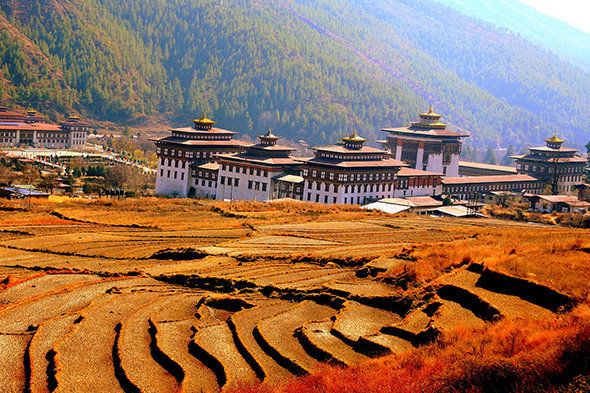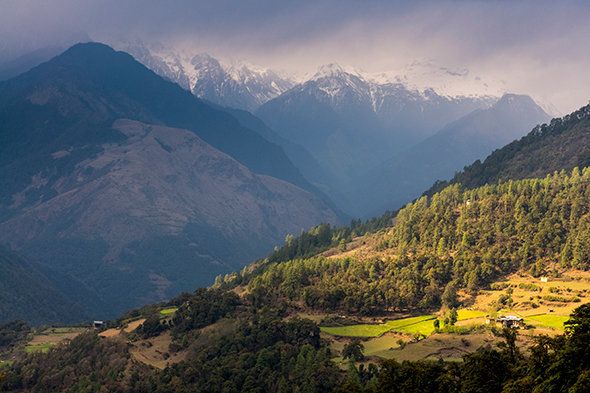Bhutan may be small, but it is scaling great heights in sustainability.
From its age-old traditions advancing into the modern era alongside magical mountains and monasteries, Bhutan is nothing short of enchanting. With a population of around 750,000 people, it is making milestones with the fight against climate change. Nestled between India and China, it can easily be forgotten, but in recent years, the world has watched as Bhutan’s success in sustainability has triumphed – with many crowning it the greenest country on the planet.
Rooted in tradition, Bhutan – the native name of Druk yul translates as ‘Land of the Thunder Dragon’ – has been careful when curbing climate change not to expose its people to unwanted modern technology. In 2014, the government introduced electric cars to its citizens – a major feat considering a television ban was only lifted in 1999. In an effort to encourage people to buy them, they suspended import taxes (and heavily subsidised LED lights).
For a small country, Bhutan has set and achieved big goals. Back in 2009, it became the first ever country to commit to being carbon neutral. Now, it’s the only carbon negative country in the world, otherwise known as a ‘carbon sink’. Thanks to its extensive forestry, it absorbs three times more C02 than the entire country emits. As it stands, 72 percent of the land is currently forested – with a law outlining it can be no less than 60 percent at any one given time. It has even banned export logging.
Due to its success, national parks, wildlife sanctuaries and nature reserves cover more than half of the country. To keep this going, it is started Green Bhutan, a programme that enables the planting of trees, plants and flowers in towns, cities and countryside.
Only last year, the country welcomed its first wind turbines. Located in the village of Rubesa, the two turbines are expected to generate a combined 600 kilowatts, which should provide ample electricity to 300 homes. If a success, 24 more wind farms will make their way to other towns. As demand increases across Bhutan for electricity, it is committed to meet it with new renewable energy sources.
A huge amount of farming taking place on government land, so they provide rural farmers with free electricity (farmers, in general, make up 70 percent of the population) as a measure to prevent them from using firewood to cook.
Last year, there was a plan to install solar panels that would produce around one megawatt of electricity, and supply 13,500 solar cook stoves and 2800 home biogas digesters in 20 districts. Mini hydropower plants, with the potential to generate 33,000 megawatts of electricity, were also in consideration.
Hydropower is a crucial component to Bhutanese life, providing 100 percent of electricity to its urban areas and 94 percent in rural sectors. Every year, the country sells 70 percent of the power it generates to its neighbour, India. If Bhutan achieves the goals set within its hydroelectric sector, it may well export more clean power to high-emitting economic giants, China and India.
Tshering Tobgay, Bhutan’s prime minister, said last year during a TED talk: “Every country is different. But every country is also hungry for models that let them overcome the limits of traditional models of conservation. There is no other Bhutan on Earth… but anytime you do something that works on a scale that matters, people are hungry to learn from it.”
The Bhutanese government are aiming for zero net greenhouse gas emissions, zero waste by 2030 and the growth of only 100 percent organic food by 2020.
For a country that only opened itself up to the rest of the world in the 1970s, it’s certainly curbing climate change without much help from other nations. With an abundance of fresh air, rolling countryside and free flowing rivers, it is considered to be one of the greenest and happiest places on Earth, and no wonder why.
Source: Huff Post



